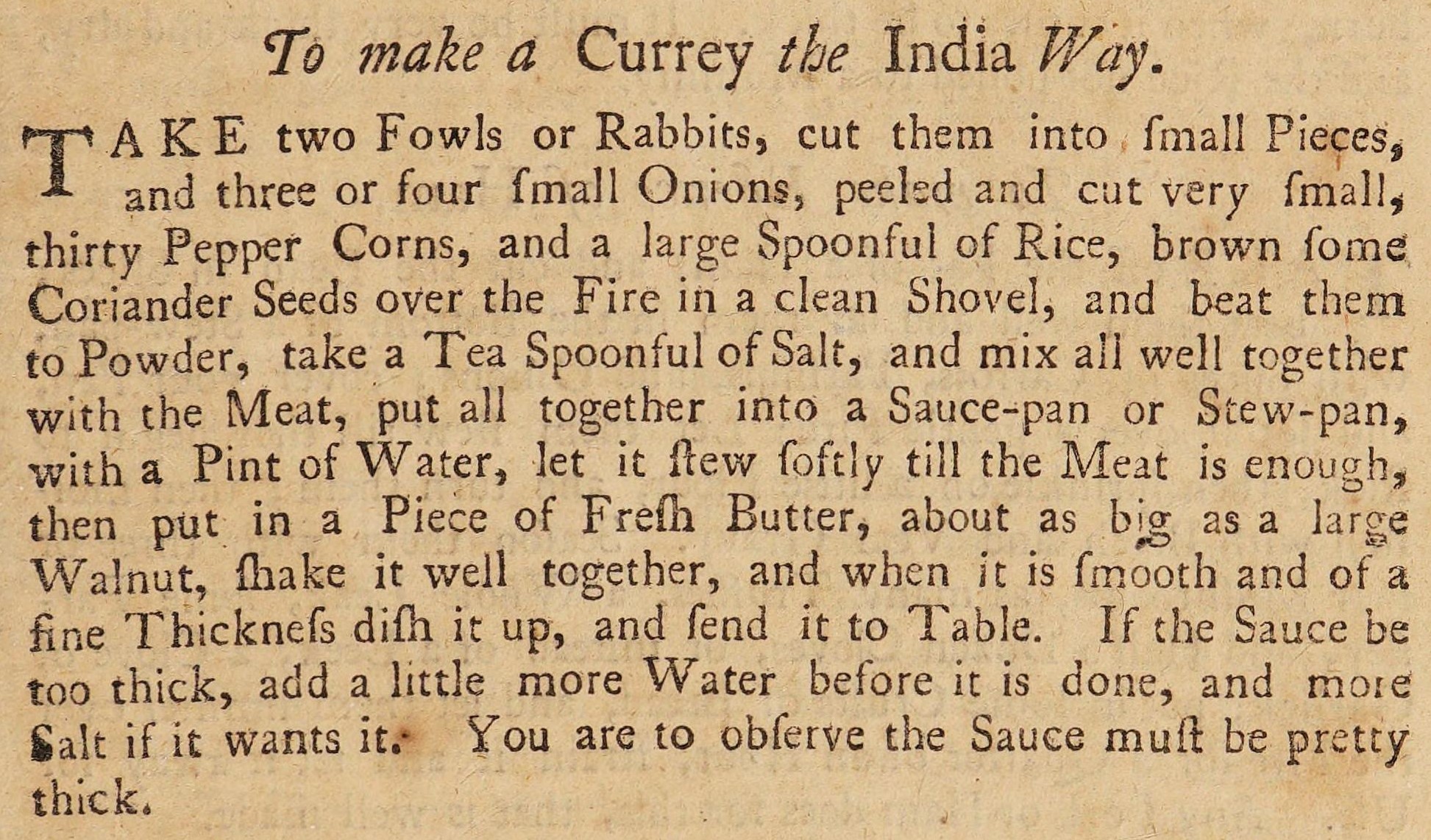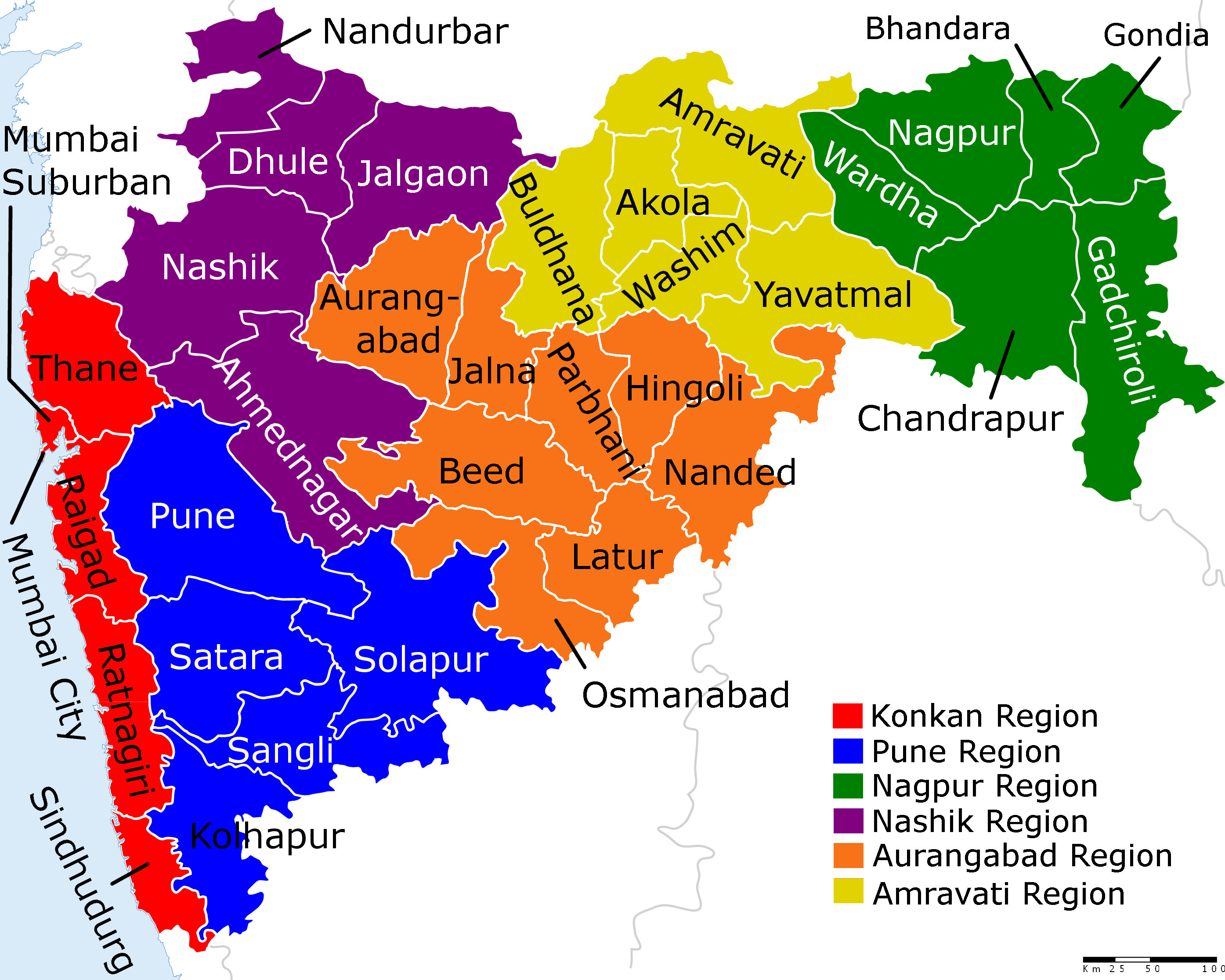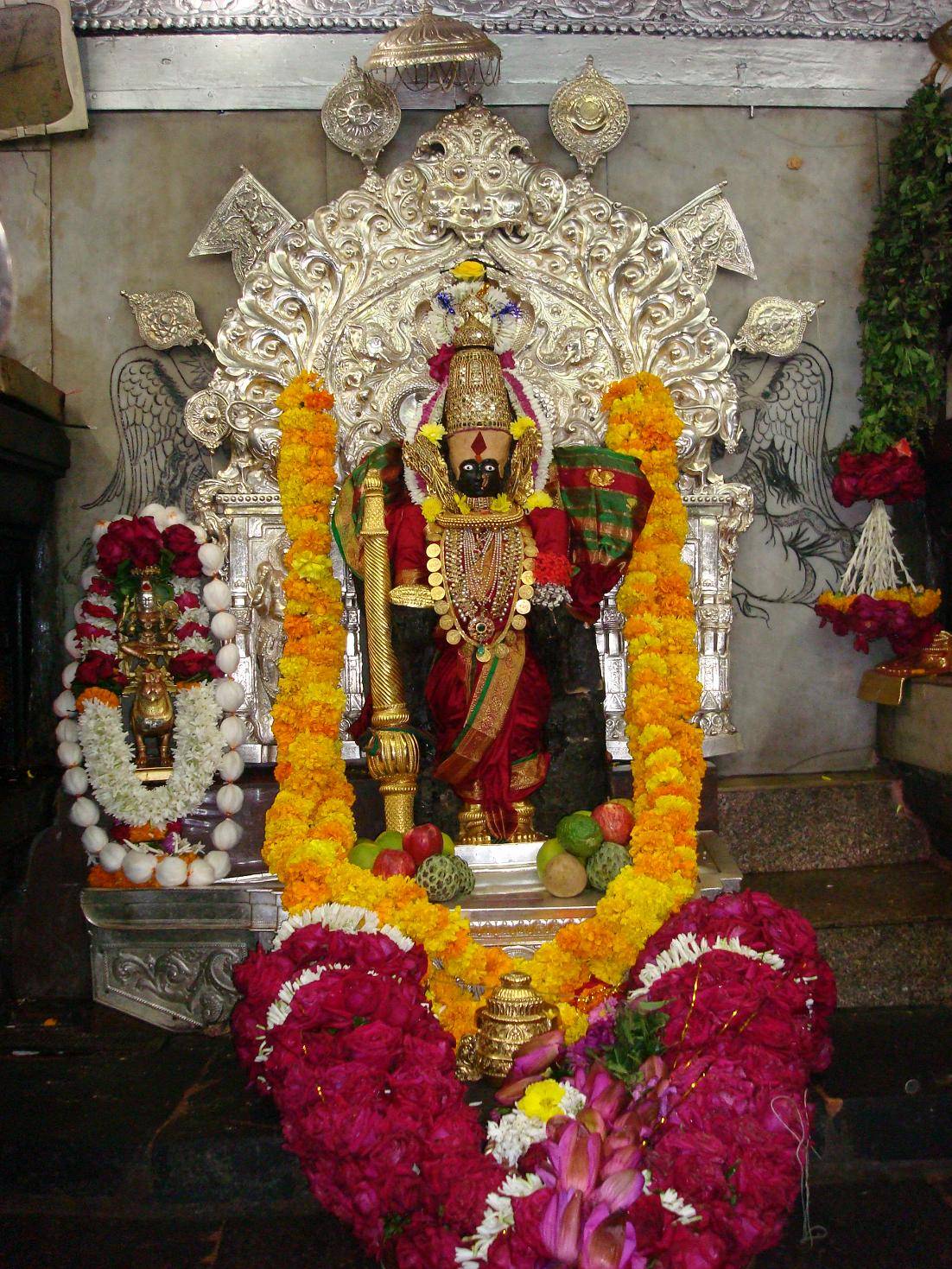|
Pav Bhaji
Pav bhaji (Marathi : पाव भाजी) is a fast food dish from India consisting of a thick vegetable curry (''bhaji'') served with a soft bread roll (''pav''). Its origins are in the state of Maharashtra. History The dish originated as a fast lunchtime dish for textile mill workers in Mumbai. Pav bhaji was later served at restaurants throughout the city. Pav bhaji is now offered at outlets from simple hand carts to formal restaurants in India and abroad. Preparation Pav Bhaji 2.jpg, Pav bhaji being prepared on an iron tava A Pav Bhaji stand at Chandni Chowk, Delhi.jpg, A pav bhaji stand at Chandni Chowk, Delhi Pav bhaji is a spiced mixture of mashed vegetables in a thick gravy served with bread. Vegetables in the curry may commonly include potatoes, onions, carrots, chillies, peas, bell peppers and tomatoes. Street sellers usually cook the curry on a flat griddle (tava) and serve the dish hot. A soft white bread roll is the usual accompaniment to the curry, but this ... [...More Info...] [...Related Items...] OR: [Wikipedia] [Google] [Baidu] |
Maharashtra
Maharashtra (; , abbr. MH or Maha) is a states and union territories of India, state in the western India, western peninsular region of India occupying a substantial portion of the Deccan Plateau. Maharashtra is the List of states and union territories of India by population, second-most populous state in India and the second-most populous country subdivision globally. It was formed on 1 May 1960 by splitting the bilingual Bombay State, which had existed since 1956, into majority Marathi language, Marathi-speaking Maharashtra and Gujarati language, Gujarati-speaking Gujarat. Maharashtra is home to the Marathi people, the predominant ethno-linguistic group, who speak the Marathi language, Marathi language, the official language of the state. The state is divided into 6 Divisions of Maharashtra, divisions and 36 List of districts of Maharashtra, districts, with the state capital being Mumbai, the List of million-plus urban agglomerations in India, most populous urban area in India ... [...More Info...] [...Related Items...] OR: [Wikipedia] [Google] [Baidu] |
Plantain (cooking)
Cooking bananas are banana cultivars in the genus ''Musa'' whose fruits are generally used in cooking. They may be eaten ripe or unripe and are generally starchy. Many cooking bananas are referred to as plantains (/ˈplæntɪn/, /plænˈteɪn/, /ˈplɑːntɪn/) or green bananas. In botanical usage, the term "plantain" is used only for true plantains, while other starchy cultivars used for cooking are called "cooking bananas". True plantains are cultivars belonging to the AAB group, while cooking bananas are any cultivars belonging to List of banana cultivars, AAB, AAA, ABB, or BBB groups. The currently accepted scientific name for all such cultivars in these groups is Musa × paradisiaca, ''Musa'' × ''paradisiaca''. Fe'i bananas (''Musa'' × ''troglodytarum'') from the Pacific Islands are often eaten roasted or boiled, and are thus informally referred to as "mountain plantains," but they do not belong to any of the species from which all modern banana cultivars are descended. ... [...More Info...] [...Related Items...] OR: [Wikipedia] [Google] [Baidu] |
Spicy Foods
Pungency () refers to the taste of food commonly referred to as spiciness, hotness or heat, found in foods such as chili peppers. Highly pungent tastes may be experienced as unpleasant. The term piquancy () is sometimes applied to foods with a lower degree of pungency that are "agreeably stimulating to the palate". Examples of piquant food include mustard and curry. Terminology In colloquial speech, the term "pungency" can refer to any strong, sharp smell or flavor. However, in scientific speech, it refers specifically to the "hot" or "spicy" quality of chili peppers. It is the preferred term by scientists as it eliminates the potential ambiguity arising from use of "hot" and "spicy", which can also refer to temperature or the presence of spices, respectively. For instance, a pumpkin pie can be both hot (out of the oven) and spicy (due to the common inclusion of spices such as cinnamon, nutmeg, allspice, mace, and cloves), but it is not ''pungent''. (A food critic may neverthe ... [...More Info...] [...Related Items...] OR: [Wikipedia] [Google] [Baidu] |
Curry Dishes
A curry is a dish with a sauce seasoned with spices, mainly associated with South Asian cuisine. In southern India, leaves from the curry tree may be included. There are many varieties of curry. The choice of spices for each dish in traditional cuisine depends on regional cultural tradition and personal preferences. Such dishes have names that refer to their ingredients, spicing, and cooking methods. Outside the Indian subcontinent, a curry is a dish from Southeast Asia which uses coconut milk or spice pastes, commonly eaten over rice. Curries may contain fish, meat, poultry, or shellfish, either alone or in combination with vegetables. Others are vegetarian. Dry curries are cooked using small amounts of liquid, which is allowed to evaporate, leaving the other ingredients coated with the spice mixture. Wet curries contain significant amounts of sauce or gravy based on broth, coconut cream or coconut milk, dairy cream or yogurt, or legume purée, sautéed crushed onion, or t ... [...More Info...] [...Related Items...] OR: [Wikipedia] [Google] [Baidu] |
Maharashtrian Cuisine
Maharashtrian or Marathi cuisine is the cuisine of the Marathi people from the Indian state of Maharashtra. It has distinctive attributes, while sharing much with other Indian cuisines. Traditionally, Maharashtrians have considered their food to be more austere than others. Maharashtrian cuisine includes mild and spicy dishes. Wheat, rice, ''jowar'', ''bajri'', vegetables, lentils and fruit are dietary staples. Peanuts and cashews are often served with vegetables. Meat was traditionally used sparsely or only by the well off until recently, because of economic conditions and culture. The urban population in metropolitan cities of the state has been influenced by cuisine from other parts of India and abroad. For example, the South Indian dishes ''idli'' and ''dosa,'' as well as Chinese and Western dishes such as pizza, are quite popular in home cooking, and in restaurants. Distinctly Maharashtrian dishes include ''ukdiche modak'', , Kande pohe and Thalipeeth. Regular meals a ... [...More Info...] [...Related Items...] OR: [Wikipedia] [Google] [Baidu] |
Indian Fast Food
The fast food industry in India has evolved with the changing lifestyles of the young Indian population. The variety of gastronomic preferences across the regions, hereditary or acquired, has brought about different modules across the country. Many of the traditional dishes have been adapted to suit the emerging fast food outlets. The basic adaptation is to decrease the processing and serving time. For example, the typical meal which called for being served by an ever-alert attendant is now offered as a Mini-Meal across the counter. In its traditional version, a plate or a banana leaf was first laid down on the floor or table. Several helpers then waited on the diner, doling out different dishes and refilling as they got over in the plate. In the fast-food version, a plate already arranged with a variety of cooked vegetables and curries along with a fixed quantity of rice and Indian flatbreads is handed out across the counter against a prepaid coupon. The curries and breads vary ... [...More Info...] [...Related Items...] OR: [Wikipedia] [Google] [Baidu] |
Street Food
Street food is ready-to-eat food or drinks sold by a hawker, or vendor, in a street or at other public places, such as markets or fairs. It is often sold from a portable food booth, food cart, or food truck and is meant for immediate consumption. Some street foods are regional, but many have spread beyond their regions of origin. Most street foods are classified as both finger food and fast food, and are typically cheaper than restaurant meals. The types of street food widely vary between regions and cultures in different countries around the world. According to a 2007 study from the Food and Agriculture Organization, 2.5 billion people eat street food every day. A majority of middle-income consumers rely on the quick access and cheap service of street food for daily nutrition and job opportunities, especially in developing countries. Today, governments and other organizations are increasingly concerned with both the socioeconomic importance of street food, and with its associa ... [...More Info...] [...Related Items...] OR: [Wikipedia] [Google] [Baidu] |
Kolhapur
Kolhapur () is a city on the banks of the Panchganga River in the southern part of the Indian state of Maharashtra. It is the administrative headquarter of the Kolhapur district. In, around 2 C.E. Kolapur's name was 'Kuntal'. Kolhapur is known as ''`Dakshin Kashi''' or Kashi of the South because of its spiritual history and the antiquity of its shrine Mahalaxmi, better known as Ambabai. The region is known for the production of the famous hand-crafted and braided leather slippers called Kolhapuri chappal, which received the Geographical Indication designation in 2019. In Hindu mythology, the city is referred to as "''Karvir''." Before India became independent in 1947, Kolhapur was a princely state under the Bhosale Chhatrapati of the Maratha Empire. It is an important center for the Marathi film industry. Etymology Kolhapur is named after Kolhasur, a demon in Hindu History. According to History, the demon Kolhasur renounced asceticism after his sons were killed by God f ... [...More Info...] [...Related Items...] OR: [Wikipedia] [Google] [Baidu] |
Jain
Jainism ( ), also known as Jain Dharma, is an Indian religion. Jainism traces its spiritual ideas and history through the succession of twenty-four tirthankaras (supreme preachers of ''Dharma''), with the first in the current time cycle being Rishabhadeva, whom the tradition holds to have lived millions of years ago, the twenty-third ''tirthankara'' Parshvanatha, whom historians date to the 9th century BCE, and the twenty-fourth ''tirthankara'' Mahavira, around 600 BCE. Jainism is considered to be an eternal ''dharma'' with the ''tirthankaras'' guiding every time cycle of the cosmology. The three main pillars of Jainism are ''ahiṃsā'' (non-violence), ''anekāntavāda'' (non-absolutism), and '' aparigraha'' (asceticism). Jain monks, after positioning themselves in the sublime state of soul consciousness, take five main vows: ''ahiṃsā'' (non-violence), '' satya'' (truth), '' asteya'' (not stealing), ''brahmacharya'' (chastity), and '' aparigraha'' (non-possessiveness). Th ... [...More Info...] [...Related Items...] OR: [Wikipedia] [Google] [Baidu] |
Meal
A meal is an eating occasion that takes place at a certain time and includes consumption of food. The names used for specific meals in English vary, depending on the speaker's culture, the time of day, or the size of the meal. Although they can be eaten anywhere, meals typically take place in homes, restaurants, and cafeterias. Regular meals occur on a daily basis, typically several times a day. Special meals are usually held in conjunction with such occasions as birthdays, weddings, anniversaries, and holidays. A meal is different from a snack in that meals are generally larger, more varied, and more filling than snacks. The type of food that is served or consumed at any given time depends on regional customs. Three main meals are often eaten in the morning, early afternoon, and evening in most modern civilizations. Further, the names of meals are often interchangeable by custom as well. Some serve dinner as the main meal at midday, with supper as the late afternoon/early eve ... [...More Info...] [...Related Items...] OR: [Wikipedia] [Google] [Baidu] |
Paneer
Paneer (), also known as ponir () is a fresh acid-set cheese common in the Indian subcontinent (Bangladesh, Bhutan, India, Maldives, Nepal, Pakistan and Sri Lanka) made from full-fat buffalo milk or cow milk. It is a non-aged, non-melting soft cheese made by curdling milk with a fruit- or vegetable-derived acid, such as lemon juice. Etymology The word ''paneer'' entered English from Persian () 'cheese', which comes from Old Iranian. Armenian (), Azerbaijani , Turkish and Turkmen , all derived from Persian , also refer to cheese of any type. History The origin of paneer is debated. Ancient Indian, Afghan-Iranian and Portuguese-Bengali origins have been proposed for paneer. Vedic literature refers to a substance that is interpreted by some authors, such as Sanjeev Kapoor, as a form of paneer. According to Arthur Berriedale Keith, a kind of cheese is "perhaps referred to" in Rigveda 6.48.18. However, Otto Schrader believes that the Rigveda only mentions "a skin of sour m ... [...More Info...] [...Related Items...] OR: [Wikipedia] [Google] [Baidu] |
Chapati
Chapati (alternatively spelled chapatti, chappati, chapathi, or chappathi; pronounced as IAST: ), also known as ''roti'', ''rotli'', ''safati'', ''shabaati'', ''phulka'', (in East Africa) ''chapo'', (in Marathi) ''poli'', and (in the Maldives) ''roshi,'' is an unleavened flatbread originating from the Indian subcontinent and staple in India, Nepal, Bangladesh, Pakistan, Sri Lanka, East Africa, Arabian Peninsula and the Caribbean. Chapatis are made of whole-wheat flour known as atta, mixed into dough with water, oil (optional), salt (optional) in a mixing utensil called a ''parat'', and are cooked on a ''tava'' (flat skillet).Nandita Godbole, 2016Roti: Easy Indian Breads & SidesChitra Agrawal, 2017Vibrant India: Fresh Vegetarian Recipes from Bangalore to Brooklyn page 35. It is a common staple in the Indian subcontinent as well as amongst expatriates from the Indian subcontinent throughout the world. Chapatis were also introduced to other parts of the world by immigrants from the ... [...More Info...] [...Related Items...] OR: [Wikipedia] [Google] [Baidu] |
_and_one_loose_plantain.jpg)




